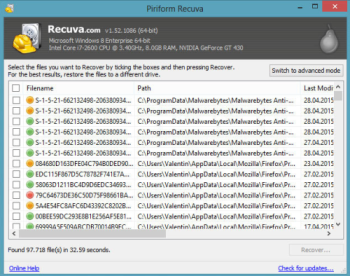What is Scarab Ransomware
Scarab ransomware is an encryption virus. It may be very dangerous for the different data on your PC, such as documents, photos etc. Scarab firstly encrypts all known files on your PC and changes file names. For example, infected file [example.png] will have a filename [example.png.resque@plague.desi.scarab]. Sometimes a virus uses different file names: [unlocking.guarantee@aol.com] and others. Since encryption happened, user can’t use infected file(s). Photos and paints can’t be opened and text documents are opened in coded form. For user it looks like random symbols. Besides that, the virus creates and automatically opens a text file

How Scarab Ransomware gets on your PC?
Ransomware-type viruses usually distributed by spam messages, trojans, software from unofficial sources, etc. Sometimes it placed in text as the attachment to the text documents. In fact these attachment contains embedded macros, which start the process of installation. Users don’t see these process because it’s going stealthy. Besides that, some unwanted programs from unknown sources mark the Scarab Ransomware as a legal useful software. It’s noticed, that sometimes viruses look like a JavaScript file or like a software update.
Symptoms of Scarab Ransomware infection
It’s difficult not to notice ransomware since it often has one of the processes responsible for displaying a notification message. This window blocks the screen leaving the user minimum alternatives. Besides, some files will be inaccessible, as in many cases ransomware encrypts them to exasperate the scaring effect.
What to do if your PC is infected with Scarab Ransomware
As soon as you notice the presence of the ransomware on your system, you should turn your computer off. If it is possible to try to create a backup or image of your hard drive info. This may let you to reserve the state of your drives in case a decryption method would be created afterward.
How to remove Scarab Ransomware?
To make sure that the adware won’t reappear, you need to delete Scarab Ransomware completely. For this you need to remove the files and registry entries of the ransomware. We should warn you that performing some of the steps may require above-average skills, so if you don’t feel experienced enough, you may apply to automatic removal tool.
Performing an antimalware scan with Norton would automatically search out and delete all elements related to Scarab Ransomware. It is not only the easiest way to eliminate Scarab Ransomware, but also the safest and the most assuring one.
Steps of Scarab Ransomware manual removal
Restart Windows in Safe Mode
For Windows XP:
- Restart the system
- While computer is rebooting press F8 several times
- In the appeared list of options choose Safe Mode
For Windows 7 and Vista:
- Restart the system
- While computer is rebooting press F8 several times
- In the appeared list of options choose Safe Mode
For Windows 8 and 8.1:
- Restart the system
- While computer is rebooting press F8 several times
- In the appeared list of options choose Safe Mode
For Windows 10:
- In the Start menu click on the power button
- Hold Shift and choose Restart
- Choose Troubleshoot
- In the Advanced Options choose Startup Settings
- Click Restart
- Select Enter Safe Mode
How to decrypt and restore .scarab files
Use the decrypting tool
Unfortunately, currently a tool able to decrypt crypted_file files is not released yet. You may try applying to the methods described below, however, they might not work with the latest versions of Scarab Ransomware.
Restore .scarab files with an automatic tool
For those types of ransomware viruses that rather remove files than encrypt them we would suggest using Recuva program.

- Download Recuva tool and launch it
- Within the on-screen wizard choose the type of the files you want to recover
- Choose the location of the files
- Wait until the application finishes scanning
- Select the required files and click the Recover button
Nevertheless there are no other tools able to restore and decrypt .scarab files, you may try applying to the manual methods described below, however, they might not work with the latest versions of Scarab Ransomware.
Restore the system
- Initiate the search for system restore
- Click on the result
- Choose the date before the infection appearance
- Follow the on-screen instructions
Roll the files back to the previous version
- Right-click the file and choose Properties
- Open the Previous Version tab
- Select the latest version and click Copy
- Click Restore
If the above-mentioned methods didn’t help in eliminating the threat, then it’s better to rely on an automatic way of deleting Scarab Ransomware.
We also recommend to download and use Norton to scan the system after Scarab Ransomware removal to make sure that it is completely gone. The antimalware application will detect any vicious components left among system files and registry entries that can recover Scarab Ransomware.




